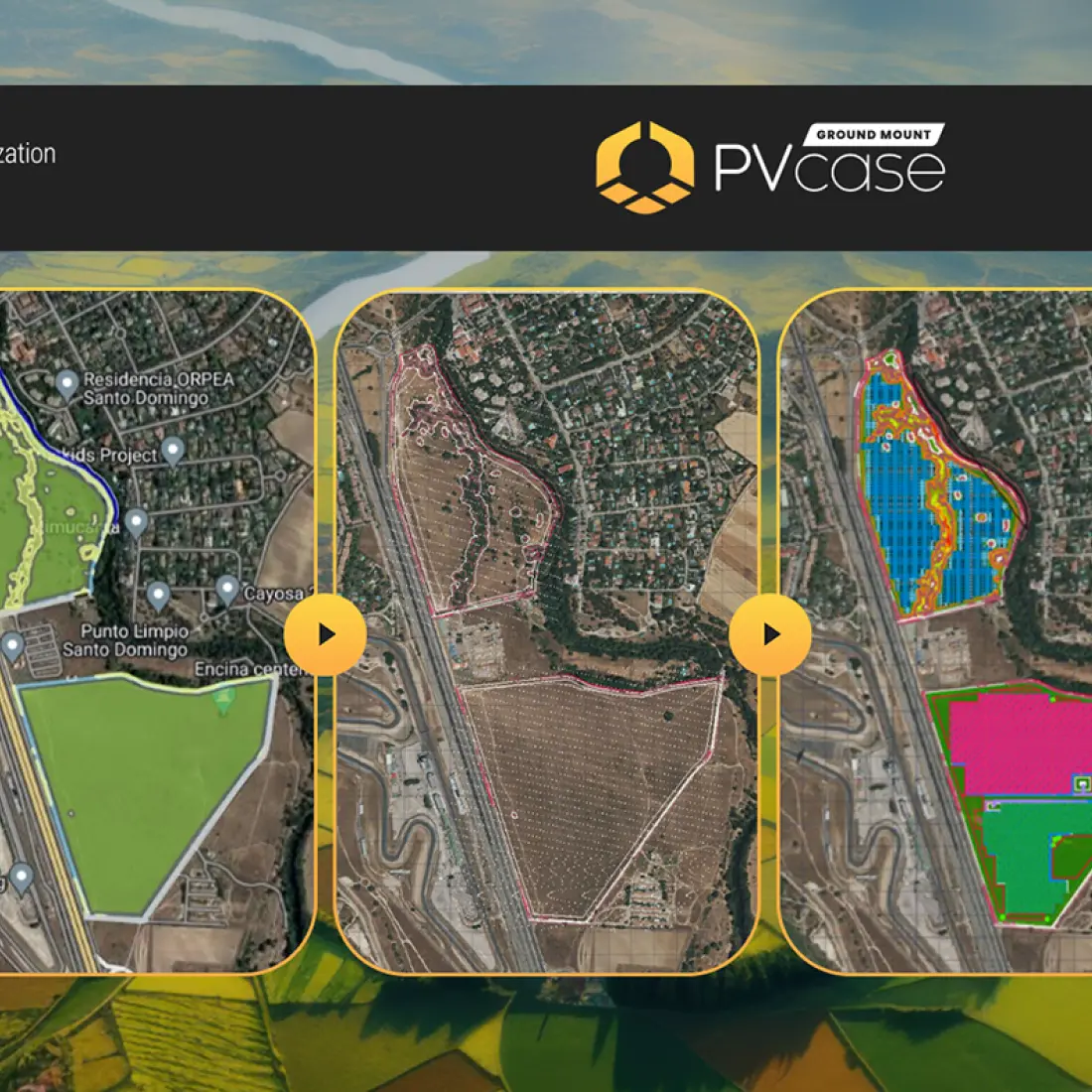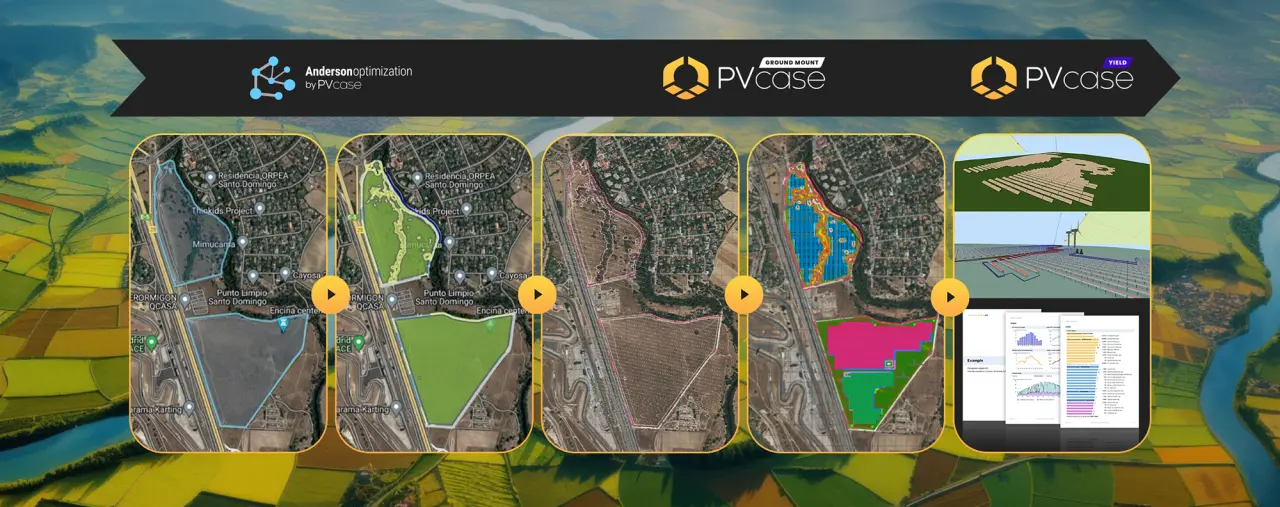PVcase Integrated Product Suite, a complete solution to streamline your solar ventures — find out more in our new ebook


We recently launched another ebook, "PVcase Integrated Product Suite as a go-to solution for efficient PV development."
This comprehensive ebook shows how each product of PVcase's Integrated Product Suite (AO Prospect, Ground Mount, and Yield) can help you enhance your solar business and development practices. It showcases the benefits of the seamless integration of these three powerful tools, their multiple functionalities, and how to address solar industry challenges.
Get the ebook here!
And there is more! In the ebook you can find an excellent simulation case study showcasing how our tools' benefits operate in real-world project development. It aims to deliver a detailed analysis of how PVcase's range of products was employed to tackle the challenges encountered in the hypothetical development of a solar project in Madrid — Circuito de Jarama.
PVcase Integrated Product Suite of products as a solution
PVcase provides three integrated tools – AO Prospect, Ground Mount, and Yield – each designed for different stages of solar development. This integrated approach reduces the risk of data loss during transfers between platforms and enables accuracy in layouts and performance.
PVcase Integrated Product Suite encompasses all aspects from site selection to design and yield calculation, thus significantly minimizing data risk, reducing time spent on repetitive manual tasks, and eliminating the human error factor. The PVcase suite is crafted to address the varied demands of the solar power sector, delivering a more precise, quick, and efficient process without compromising quality.

Solar industry challenges
The solar industry is growing but faces several challenges that our integrated solution, the PVcase Integrated Product Suite, is ready to address. A shortage of professionals, particularly engineers, is one of them, hindering progress, leading to project delays and inefficiencies. The EU Solar Jobs Report predicts that by 2025, the solar sector will create up to 1 million new jobs, reaching 1.2 million by 2027. The US also faces a similar rapid growth with installations going to increase fivefold over the next decade, growing from 141 GW in 2022 to over 700 GW by 2033 as per Wood Mackenzie/SEIA US Solar Market Insight 2022.
Data risk is another major factor that could negatively impact solar development. This risk stems from rapid global expansion, outdated data formats, and isolated software systems, which contribute to non-bankable solar projects with design flaws, causing financial losses and poor investment returns.
“Data risk is a technical problem that has become an industry-wide constraint,” said PVcase CEO David Trainavicius. David also mentioned to PV Tech magazine that PVcase “vision is for all the companies and consultants involved in project development to be able to use a single, centralized system to input, manage, and track data.”
Grab our ebook to learn how to benefit from the integrated suite.